- Why Autumn Pruning Is Essential for Young Grapevines
- 1. Shaping the Structure
- 2. Promoting Better Air Circulation
- 3. Controlling the Size
- Conclusion
- Encouraging Strong Root Growth
- 1. Select the Right Pruning Techniques
- 2. Prune for Balance
- 3. Mulch and Fertilize
- 4. Monitor Soil Moisture
- 5. Train and Support Young Shoots
- Shaping the Future Vine Structure
- 1. Remove Weak Shoots
- 2. Select the Main Trunk
- 3. Train the Side Branches
- 4. Maintain Spacing
- 5. Remove Dead or Diseased Wood
- 6. Consider Vine Training Techniques
- Preventing Disease and Pest Infestation
- 1. Clean Pruning Tools
- 2. Remove Diseased or Infested Branches
- 3. Prune in Dry Weather
- 4. Prune to Open Up the Canopy
- 5. Maintain Proper Spacing
- 6. Monitor for Signs of Disease and Pests
- 7. Practice Good Garden Hygiene
- 8. Use Organic Pest Control Methods
- 9. Follow Proper Pruning Techniques
- Improving Air Circulation
- Increasing Sunlight Exposure
- Assessing Shade
- Removing Obstructions
- Pruning Dense Canopy
- Training the Vines
- Enhancing Fruit Production
- 1. Remove Excess Canes
- 2. Thin Out Clusters
- 3. Prune Weak Shoots
- 4. Manage Vine Density
- 5. Maintain Proper Spacing
- 6. Consider Fertilization
- Removing Dead and Diseased Wood
- Promoting Overall Plant Health
- Question-answer:
- Why is autumn pruning important for young grape bushes?
- When is the best time to prune young grape bushes in autumn?
- What should be removed during autumn pruning of young grape bushes?
- Can I prune young grape bushes more than once during autumn?
- What are the consequences of not pruning young grape bushes in autumn?
- Video: Pruning Muscadines
Pruning is an essential practice for maintaining healthy and productive grape vines. It involves removing unwanted growth and shaping the bush to optimize sunlight penetration and airflow. Autumn is a crucial time for pruning young grape bushes as it helps establish a strong framework for future growth. However, knowing what to keep and what to remove can be challenging for novice growers.
Keeping the Right Canes:
When pruning young grape bushes in autumn, it is important to keep the right canes. These canes should be healthy, thick, and sturdy. Look for canes that are at least one year old, as younger canes may not be strong enough to support fruitful growth. These chosen canes will become the main fruiting canes for the next growing season.
Tip: Select canes that are positioned at 45-degree angles from the main trunk. This angle helps promote bud break and airflow, resulting in healthier and more productive vines.
Removing Suckers and Weak Growth:
While it is essential to keep the right canes, it is equally important to remove suckers and weak growth. Suckers are shoots that originate from the rootstock and compete with the main vine for nutrients and energy. They should be completely removed to prevent them from overtaking the main vine. Removing weak and thin shoots is also crucial as they are less likely to produce fruitful buds.
Expert Tip: Remember to prune close to the base of the vine when removing suckers and weak growth to avoid leaving stubs that can become entry points for disease and pests.
Training the Vine:
Autumn pruning is an ideal time to train the young grape bush to grow in the desired form. While removing unwanted growth, be sure to preserve the main trunk and any cordons or arms that will serve as the framework for future fruiting canes. Prune back lateral shoots to just a few buds, allowing them to grow and fill in the desired canopy. By properly training the vine, you can encourage healthy growth and make future pruning easier.
In conclusion, autumn pruning is a vital task for young grape bushes. The key is to keep the right canes while removing suckers and weak growth. Additionally, training the vine during pruning helps establish a strong framework for future fruiting canes. With these tips in mind, you can ensure that your grape vine is in the best condition to thrive and produce a bountiful harvest in the coming years.
Why Autumn Pruning Is Essential for Young Grapevines
Grapevines require regular pruning to ensure their healthy growth and optimal fruit production. Autumn pruning, in particular, is essential for young grapevines as it helps to shape their structure, promote better air circulation, and control their size.
1. Shaping the Structure
During the first few years of a grapevine’s life, it is crucial to establish a strong and balanced structure. Autumn pruning allows growers to shape the young vine by removing unnecessary shoots and canes, directing growth in the desired direction.
By selectively pruning the vines, it is possible to create a well-balanced network of branches and canes that will support the weight of the grape clusters as they grow. This helps prevent breakages and ensures a sturdy framework for future growth.
2. Promoting Better Air Circulation
Adequate air circulation is vital for grapevines as it reduces the risk of diseases such as mildew and rot. Without proper airflow, the foliage becomes dense, creating a damp environment that favors fungal infections.
Autumn pruning allows for the removal of excess foliage and enables better ventilation among the remaining leaves. This helps to keep the grapevines dry and decreases the chances of disease development, ultimately leading to healthier plants and better fruit quality.
3. Controlling the Size
Managing the size of young grapevines is crucial to prevent overcrowding in the vineyard and to facilitate maintenance tasks such as harvesting and disease management. Unrestrained growth can lead to tangled canopies that are difficult to manage and can hinder sun exposure and ripening of the grapes.
Autumn pruning plays a vital role in controlling the size of the vine by removing excess growth and maintaining a manageable plant structure. This allows for easier vineyard management, better sunlight penetration, and improved grape quality.
Conclusion
In conclusion, autumn pruning is essential for young grapevines as it helps shape their structure, promote better air circulation, and control their size. By conducting regular pruning in the fall, grape growers can ensure the health and productivity of their vines, leading to higher-quality grapes and better yields in the future.
Encouraging Strong Root Growth
Strong root growth is essential for the overall health and productivity of young grape bushes. By focusing on root development during the autumn pruning, you can help your grape bushes establish a strong foundation for future growth. Here are some tips to encourage strong root growth:
1. Select the Right Pruning Techniques
During the autumn pruning, make sure to use techniques that promote healthy root growth. This includes removing any dead, damaged, or diseased wood, as well as thinning out excessive growth. By removing unnecessary branches and foliage, you allow more sunlight and airflow to reach the base of the grape bush, stimulating root development.
2. Prune for Balance
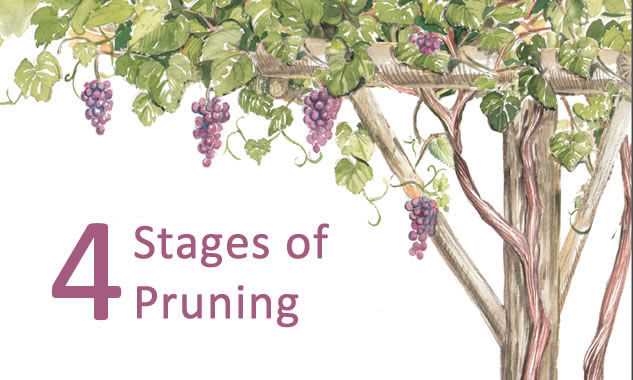
A well-balanced grape bush will have an even distribution of foliage and fruiting canes. This balance ensures that the root system can adequately support the growth above ground. Avoid heavy pruning that removes too much foliage, as this can weaken the root system. Instead, aim for a moderate pruning that maintains a good balance between foliage and fruiting canes.
3. Mulch and Fertilize
After pruning, apply a layer of organic mulch around the base of the grape bush. This helps to insulate the soil, regulate moisture levels, and provide essential nutrients to the roots. Additionally, consider applying a slow-release fertilizer specifically formulated for grape bushes. This will provide your young bushes with the necessary nutrients for healthy root development.
4. Monitor Soil Moisture
Consistent and appropriate soil moisture is crucial for root growth. Too much water can lead to root rot, while insufficient water can cause the roots to become stressed and hinder their growth. Monitor the soil moisture levels regularly and adjust irrigation accordingly to ensure optimal root development.
5. Train and Support Young Shoots
During the autumn pruning, consider training and supporting young shoots to encourage upward growth. This helps to establish a strong framework for the grape bush and promotes deeper root growth. Use stakes or trellises to guide the shoots in the desired direction and provide additional support as needed.
By following these tips, you can encourage strong root growth in your young grape bushes. Remember that healthy roots are the foundation for a productive and thriving grape bush.
Shaping the Future Vine Structure
Pruning young grape bushes during autumn plays a crucial role in developing a strong and healthy vine structure. By removing certain parts of the plant, you can influence how the vine will grow in the coming seasons. Here are some key tips for shaping the future vine structure:
1. Remove Weak Shoots
During the autumn pruning, it is important to identify and remove weak shoots. Weak shoots are usually thin, pale, or less vigorous compared to the others. Removing these shoots will allow the plant to focus its resources on developing the stronger shoots.
2. Select the Main Trunk
Identify the main trunk, which is the central shoot that will form the backbone of the grape vine. Choose a well-developed, straight, and healthy shoot to become the main trunk. Remove any competing shoots to ensure the main trunk receives maximum support and nutrients.
3. Train the Side Branches
The side branches determine the overall shape and structure of the grape vine. Select two to three sturdy shoots on each side of the main trunk to become the side branches. These branches will serve as the foundation for future fruiting canes. Remove any excess or weak side shoots to maintain a balanced and open structure.
4. Maintain Spacing
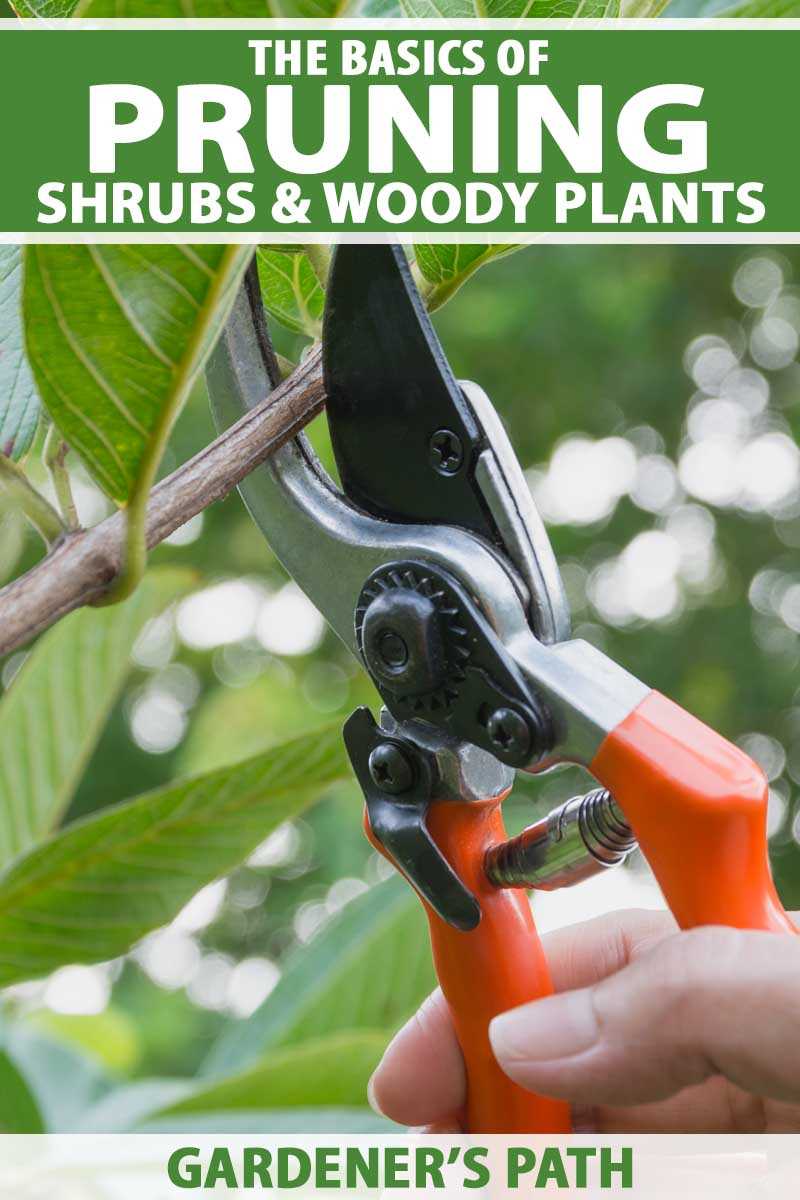
Ensure there is adequate spacing between each side branch to allow for proper air circulation and sunlight penetration. This will minimize the risk of disease and help the grapes ripen evenly. Aim for a spacing of about 6 to 8 inches between each side branch.
5. Remove Dead or Diseased Wood
Inspect the vine carefully and remove any dead or diseased wood. This helps prevent the spread of diseases and creates a healthier growing environment for the vine.
6. Consider Vine Training Techniques
Depending on the vine training technique you plan to use, adjust your pruning accordingly. For example, if you are planning to train the vine using the Guyot system, retain one or two fruiting canes and remove all other shoots.
Remember, the goal of shaping the future vine structure is to create a well-balanced and open canopy that allows for even fruit ripening, optimal sunlight exposure, and good air circulation. Regular pruning and training during the early years of the grape bush will set the foundation for a productive and healthy vineyard in the long run.
Preventing Disease and Pest Infestation
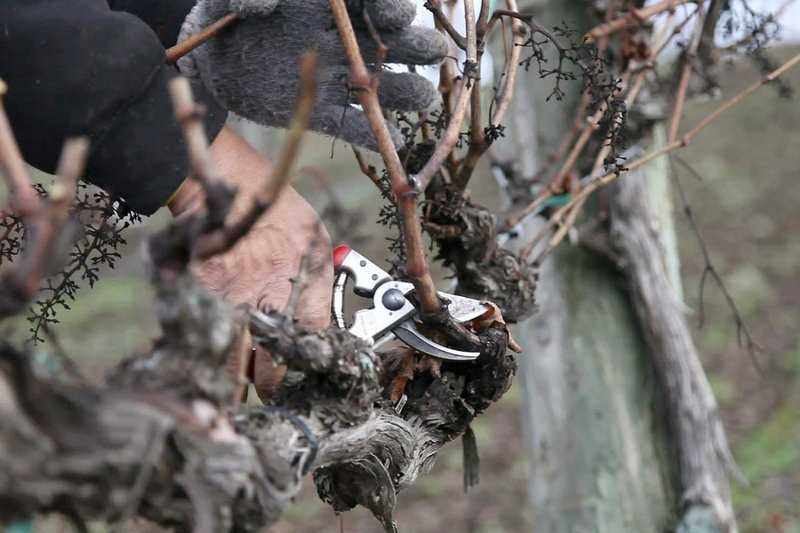
Proper pruning techniques can help prevent the spread of disease and infestation in young grape bushes. Here are some tips to keep your grape bushes healthy:
1. Clean Pruning Tools
Before you begin pruning, make sure your pruning tools are clean and disinfected. This helps prevent the spread of diseases from one plant to another. Clean your tools with a mixture of one part bleach to nine parts water or use rubbing alcohol to disinfect them.
2. Remove Diseased or Infested Branches
Inspect your grape bushes for any signs of disease or pest infestation. Look for discolored leaves, unusual growths, or signs of pests like aphids or mites. Carefully cut off any affected branches and dispose of them away from your grape bushes to prevent spreading the disease or pests.
3. Prune in Dry Weather
It’s best to prune your grape bushes when the weather is dry. Wet weather can promote the spread of fungal diseases. Make sure the weather forecast predicts at least a few days of dry weather before you start pruning.
4. Prune to Open Up the Canopy
One of the goals of pruning young grape bushes is to open up the canopy to improve air circulation. This helps reduce the risk of fungal infections. Remove any excess foliage that is blocking sunlight and air from reaching the center of the bush.
5. Maintain Proper Spacing
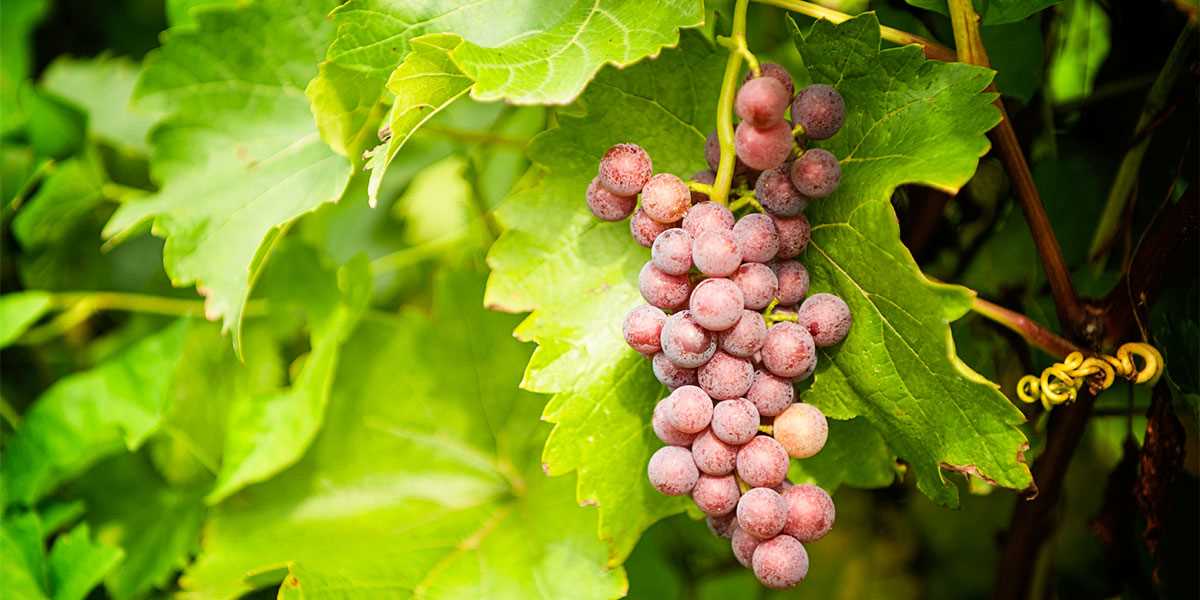
Ensure that there is enough space between each grape bush to promote air circulation and reduce the risk of disease. Overcrowding can create a moist and humid environment that favors the growth of fungi and pests. Follow the recommended spacing guidelines for your specific grape variety.
6. Monitor for Signs of Disease and Pests
Regularly monitor your grape bushes for signs of disease and pests throughout the growing season. Look for any unusual changes in foliage color or texture, stunted growth, or insects. Early detection allows you to take prompt action and prevent the spread of diseases and pests.
7. Practice Good Garden Hygiene
Keep your garden clean and tidy to reduce the risk of disease and pest infestation. Remove fallen leaves and debris from around the grape bushes, as they can harbor pests and diseases. Regularly weed the area around the bushes to prevent competition for nutrients and water.
8. Use Organic Pest Control Methods
If you notice pests on your grape bushes, try using organic pest control methods before resorting to chemical solutions. These methods include introducing beneficial insects, using insecticidal soaps or oils, and implementing physical barriers like netting to keep pests away.
9. Follow Proper Pruning Techniques
Lastly, make sure you are using proper pruning techniques when removing branches. Clean cuts close to the trunk or another branch, and avoid leaving stubs. This helps promote quick healing and reduces the risk of disease entry through open wounds.
| Disease/Pest | Description |
|---|---|
| Black Rot | A fungal disease that causes black, shriveled grapes and can defoliate the bush. |
| Powdery Mildew | A fungal disease that leaves a white powdery coating on the leaves and can distort growth. |
| Aphids | Small insects that feed on sap and can cause leaf yellowing and curling. |
| Mites | Tiny pests that can cause yellowed leaves and distorted growth. |
| Japanese Beetles | These beetles feed on grape leaves, causing skeletonized foliage and reduced plant vigor. |
By following these preventive measures and monitoring your grape bushes regularly, you can help ensure their health and productivity. Your well-maintained grape bushes will be less susceptible to diseases and pests, leading to a bountiful harvest.
Improving Air Circulation
Proper air circulation is crucial for the health and productivity of young grape bushes. It helps prevent the development of diseases and promotes the drying of foliage, reducing the risk of fungal infections. Here are some ways to improve air circulation:
- Prune away excess foliage: Remove any excessive branches, leaves, or shoots that obstruct the airflow. These can create a dense canopy and limit air movement within the bush.
- Thin out the grape clusters: When the clusters are too crowded, they can trap moisture and obstruct air circulation. Thin out the clusters by removing some grapes, leaving enough space between them for air to flow freely. This practice also helps in attaining better quality grapes.
- Space the grape bushes properly: Plant the young grape bushes at the recommended distance to ensure adequate airflow between them. Crowded plantings can impede air circulation and increase the risk of disease.
- Use trellising systems: Consider using a trellis or support system to keep the grape bushes upright and well-spaced. This helps maintain an open canopy and allows air to move more easily through the foliage.
Note: It’s important to strike a balance between pruning for air circulation and maintaining enough foliage for photosynthesis and fruit production. Consult local experts or agricultural extension services for specific recommendations for your grape variety and growing conditions.
Increasing Sunlight Exposure
One of the important aspects of pruning young grape bushes in autumn is to increase sunlight exposure. Sunlight is crucial for the photosynthesis process in plants and plays a significant role in the growth and development of grapevines. Pruning helps in creating an optimum environment for the vines to receive maximum sunlight exposure, leading to better fruit production and overall plant health.
Assessing Shade
Before pruning, it is essential to assess the amount of shade that the grape bushes receive. Grapevines thrive in full sun conditions, receiving at least 6-8 hours of direct sunlight per day. Any excessive shade can hinder their growth and productivity. Inspect the area around the grape bushes to identify any obstructions, such as overhanging trees, structures, or even other plants that may be casting shadows on the vines.
Removing Obstructions
To increase sunlight exposure, it is necessary to remove any obstructions that are casting shade on the grape bushes. Start by cutting back or removing any overhanging branches or limbs from nearby trees. This will instantly create more light for the vines. If there are any structures like pergolas or arbors above the grape bushes, consider pruning them as well to allow more sunlight to reach the plants.
Pruning Dense Canopy
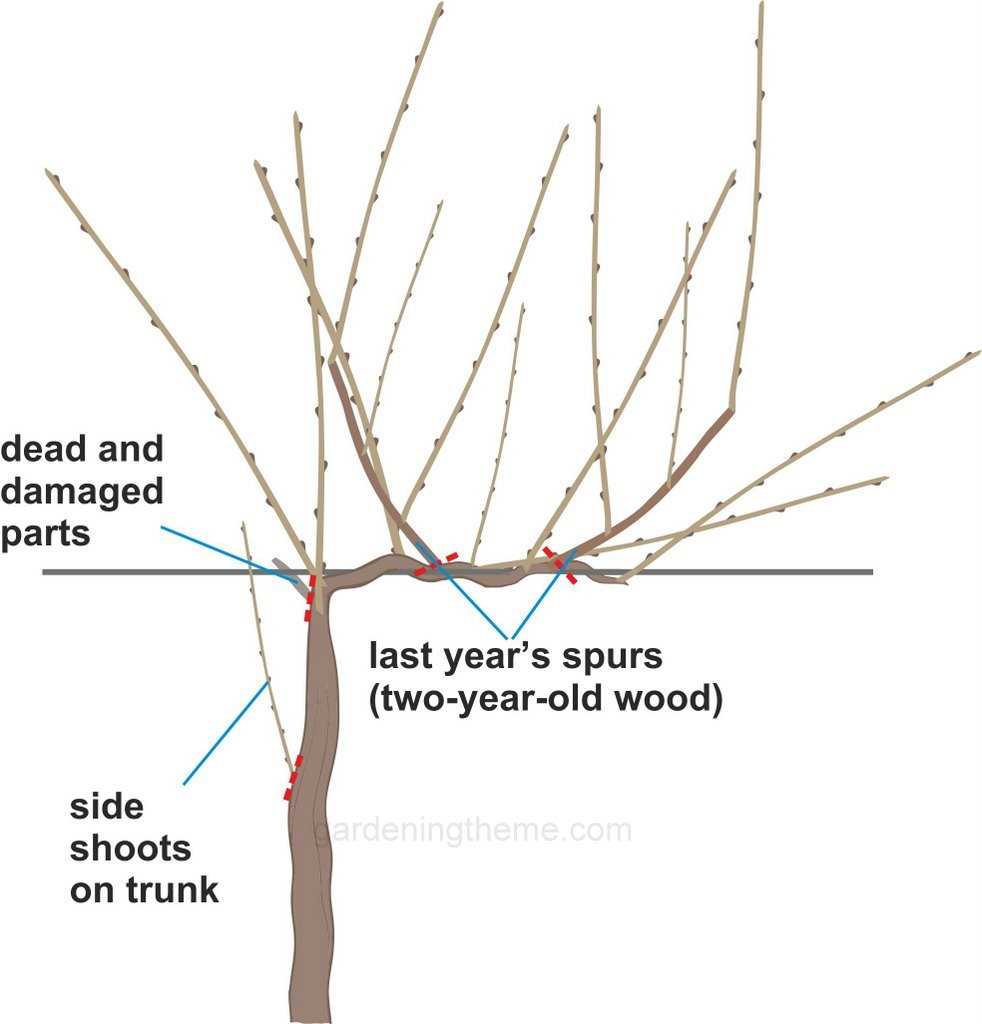
In some cases, the grape bushes may have a dense canopy, causing shade on the lower parts of the plant. It is essential to thin out the canopy to allow more sunlight to penetrate throughout the vine. Identify and remove excessive lateral shoots or unwanted canes that are shading the inner parts of the plant. This will open up the plant structure, ensuring that sunlight can reach all parts of the vine.
Training the Vines
Pruning also helps in training the vines and encouraging upward growth, which can further maximize sunlight exposure. Remove any lateral shoots that are growing horizontally or downwards, as they can obstruct light and restrict growth. Instead, encourage upward growth by training the main shoots along a trellis or support system.
By increasing sunlight exposure through proper pruning techniques, young grape bushes can develop a robust and healthy structure, resulting in better yield and high-quality fruit. Regular assessments and adjustments to maintain optimum light conditions will contribute to the overall success of the vineyard.
Enhancing Fruit Production
The goal of autumn pruning is to enhance fruit production in young grape bushes. Here are some tips to help you achieve better fruit yield:
1. Remove Excess Canes
Remove any excess canes that have grown during the summer. These canes are not necessary for fruit production and can cause overcrowding in the grape bush. Keep only the healthiest and strongest canes that have adequate spacing between them.
2. Thin Out Clusters
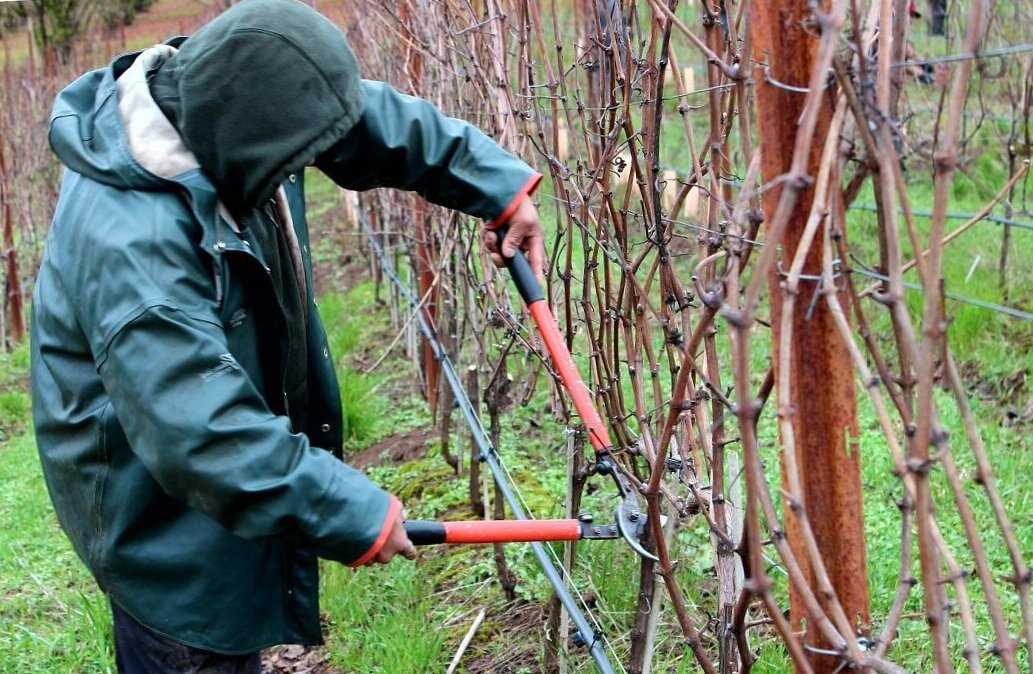
Thin out grape clusters by removing small, undeveloped berries. This allows the plant to direct more energy towards fewer grapes, resulting in larger and healthier fruit.
3. Prune Weak Shoots
Prune any weak shoots that are unlikely to produce quality fruit. By removing these shoots, you encourage the plant to put more energy into the stronger shoots, increasing the chances of a good harvest.
4. Manage Vine Density
Keep an eye on the overall vine density and make necessary adjustments. If the grape bush is becoming too crowded, remove some of the weaker shoots to create more space and allow better airflow.
5. Maintain Proper Spacing
Ensure that there is enough space between grape bushes to allow for proper airflow and sunlight penetration. This helps prevent diseases and promotes even ripening of the fruit.
6. Consider Fertilization
If your grape bushes are not showing optimal growth or fruit production, consider applying a suitable fertilizer to provide the necessary nutrients. Consult with a local expert or do a soil test to determine the best fertilizer for your specific soil conditions.
By following these tips, you can enhance fruit production in your young grape bushes and ensure a bountiful harvest in the coming seasons.
Removing Dead and Diseased Wood
One of the most important tasks during autumn pruning is removing dead and diseased wood from your grape bushes. This helps maintain the health and productivity of your vines, as well as prevent the spread of diseases.
Here are some steps to follow when removing dead and diseased wood:
- Inspect the entire grape bush for any signs of dead or diseased wood. This includes looking for branches that are dry, brittle, discolored, or showing signs of fungal infections.
- Use clean and sharp pruning shears or loppers to remove the dead and diseased wood. Make sure to sanitize your tools before and after each cut to prevent the spread of diseases.
- Cut the dead branches back to the healthy green wood, making the cut just above a healthy bud or node. This will help stimulate new growth in the coming season.
- Remove any branches that are crossing or rubbing against each other, as they can create wounds that are prone to disease.
- Collect and dispose of the removed wood in a safe manner. Do not compost it, as it may still harbor diseases or pests.
After removing dead and diseased wood, it is important to clean up the area around your grape bushes. This includes raking and removing any fallen leaves, as they can also harbor diseases.
By regularly removing dead and diseased wood from your grape bushes, you are taking proactive steps to maintain the health and productivity of your vines. This will help ensure a successful harvest in the coming seasons.
Promoting Overall Plant Health
Promoting the overall health of your grape bushes is essential for ensuring their longevity and productivity. By following the proper pruning techniques during autumn, you can help your young grape bushes thrive. Here are some tips to promote overall plant health:
Remove dead, damaged, or diseased wood: During autumn pruning, it is important to remove any dead, damaged, or diseased wood from your grape bushes. This helps prevent the spread of diseases and pests, promotes airflow, and improves the overall health of the plant.
Thin out overcrowded areas: Over time, grape bushes can become congested with excessive growth. Thinning out overcrowded areas allows for better sunlight penetration, improves air circulation, and reduces the risk of disease. Remove any overlapping or competing branches to maintain an open and well-structured vine.
Prune away suckers: Grape bushes often produce suckers, which are shoots that grow from the base of the plant or the trunk. These suckers do not contribute to fruit production and can compete for resources. Prune away any suckers to redirect the plant’s energy towards productive growth.
Train new shoots: Autumn pruning is a great opportunity to train and guide the new shoots of your grape bushes. Select the strongest and healthiest shoots and tie them to a trellis or support system. This helps control the direction and growth of the plant, ensures proper spacing between shoots, and improves fruit production.
Monitor and manage pests: While pruning, keep an eye out for any signs of pests or diseases. Remove any affected parts of the plant and take necessary measures to control the infestation. Regular monitoring and proactive pest management practices are crucial for maintaining the overall health of your grape bushes.
By following these tips and regularly pruning your young grape bushes during autumn, you will promote their overall health and ensure a successful growing season. Remember to always use clean and sharp pruning tools to minimize stress on the plants. Happy pruning!
Question-answer:
Why is autumn pruning important for young grape bushes?
Autumn pruning is important for young grape bushes because it helps promote their growth and development. By removing unnecessary branches and leaves, the plant can allocate more energy towards fruit production. Additionally, pruning helps maintain proper air circulation and sunlight exposure, reducing the risk of diseases and ensuring healthy grape production in the future.
When is the best time to prune young grape bushes in autumn?
The best time to prune young grape bushes in autumn is after the leaves have fallen and the plant has entered its dormant phase. This is usually in late November or early December, depending on the climate and grape variety. Pruning too early can stimulate new growth that may be damaged by frost, while pruning too late can delay the plant’s dormancy process, making it more vulnerable to winter conditions.
What should be removed during autumn pruning of young grape bushes?
During autumn pruning of young grape bushes, it is important to remove any dead or diseased wood, as well as branches that are crossing or rubbing against each other. Additionally, any weak or non-productive shoots should be removed. The goal is to create an open and balanced structure that allows for good air circulation and sunlight penetration.
Can I prune young grape bushes more than once during autumn?
It is generally not recommended to prune young grape bushes more than once during autumn. Pruning too much can weaken the plant and delay its dormancy. However, if there are specific issues like disease or excessive growth, a second, more minimal pruning may be necessary. It is always best to consult with a local expert or agricultural extension service for guidance in such cases.
What are the consequences of not pruning young grape bushes in autumn?
Not pruning young grape bushes in autumn can have several consequences. The plant can become overgrown and tangled, reducing air circulation and increasing the risk of diseases like powdery mildew or botrytis. Without proper pruning, the plant may also allocate insufficient energy for fruit production, resulting in smaller or lower-quality grapes. Furthermore, unpruned grape bushes can be more difficult to manage and harvest in the future.







